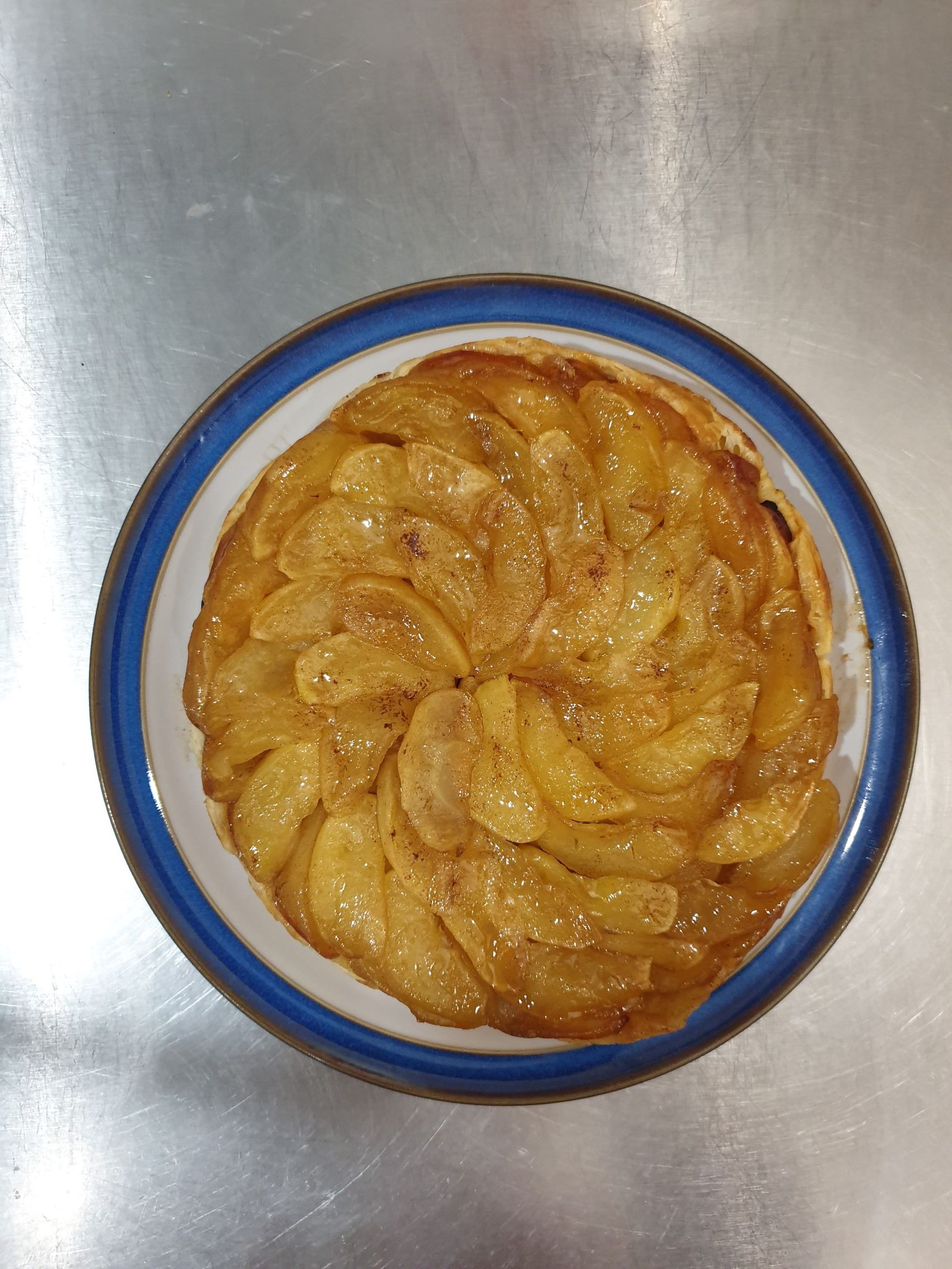We’ve all heard of the classic French Tarte Tatin, but do you know the history of it? Well, there are actually a few theories but my favourite is as follows. Named after the hotel of the same name (Hôtel Tatin), legend has it the dessert was invented by the cook who was having a bad day. Rushed off her feet, Stéphanie Tatin started to make a traditional tarte aux pommes, or apple pie, but accidentally left the apples cooking in butter and sugar far too long. In an attempt to salvage the dish, she put the pastry base on top and finished it off by baking it in the oven. It was then flipped to form a caramelised apple tart. To her surprise, the dessert was a hit with guests and so the Tarte Tatin was born. I’m choosing to believe this is true.

Baking
Traditionally the whole tart is baked in the frying pan, beginning by caramelising the apples on the hob, then topping with pastry before baking. It is then flipped to reveal the apples on top, so a kind of upside down apple tart. However, my recipe did things a little differently. The apples were first softened in a small amount of caramel in a frying pan so they would be easier to arrange. They were then transferred to a cake tin containing a 3mm base layer of sugar and butter, which would later form the caramel when heated. The apples were baked for 20 minutes before adding the pastry on top.
It seems so obvious now…with the benefit of hindsight, but I made one fatal error: I used a spring-form cake tin. As you can imagine, the melted butter and sugar seeped mercilessly out of the bottom and I watched on helplessly as my tin wept tears of caramel into the oven. Miraculously all most all of it was caught by a trusty oven tray to save my poor oven from too much harm. And there on a burnt tray lay all my caramel and with it, all of my hopes and dreams. Too late to turn back, I forged on and completed the recipe regardless, fully prepared for a dry and lifeless apple tart. Then came the moment of truth. I flipped the tin, and lo and behold, revealed a lovely apple tart, albeit a little healthier than planned.
I sometimes think about the copious amounts of sugar and butter lost that day, but am reconciled by how delicious and pretty it still turned out. Rest assured I will definitely be using an oven-proof frying pan next time, or a non-spring-form tin at the very least.
Translation
Verre à moutarde
To make the initial caramel the recipe asks for “½ verre à moutarde” of sugar, literally ½ a mustard glass of sugar. I’d never heard of a verre à moutarde before, let alone one being used for baking measurements. Flashback to the Spanish recipe using yoghurt glasses. It appears to be a small glass tumbler and thankfully I was able to source the equivalents online. One verre à moutarde is 150g sugar apparently, so I’d need 75g, which seemed to work for my recipe.
Arranging the apple slices
The instructions say to “Ranger harmonieusement les morceaux de pommes dans le moule en les serrant légèrement”, literally harmoniously arrange the pieces of apple in the tin gently squeezing them together. My suggestion was to “gently arrange the apple pieces tightly in a nice fan shape”, with the fan shape being the typical pattern seen on a tarte tatin. I feel this more clearly explains how to place the apples in the tin.
Cuillère à soupe and cuillère à café
The French for tablespoon and teaspoon are cuillère à soupe and cuillère à café/cuillère à thé, respectively, i.e. a soup spoon and a coffee/tea spoon. It’s interesting to see how the different countries’ cultures and gastronomical preferences have influenced how they refer to these spoons.
Overall this is a relatively simple dish to make, particularly if you use ready-made pastry. Apple season is almost upon us and my apple tree is promising a healthy yield, so I will definitely be revisiting the tarte tatin, but I shall be aiming for a thick caramel finish next time. I also have another apply pastry recipe up my sleeve coming soon…



